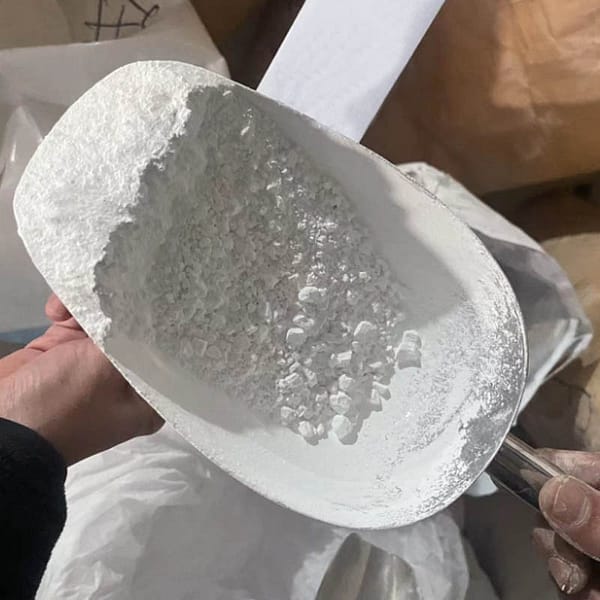Titanium dioxide (also called TiO2, white titanium or Pigment White 6 – PW6)) is a major component in a wide range of industries. It’s particularly popular in rubber, paints plastics, and paper. The versatile chemical is famous for its brilliant, white color. It plays a vital role in the transformation process of raw materials into vibrant, finished products. Let’s look into the wonders of titanium dioxide, examining its uses, manufacturing processes and the impact it has on various industries.
The Canvas of Titanium Dioxide: A palette of Possibilities
Titanium dioxide is a crucial ingredient in a variety of products. It contributes to the aesthetic appeal and functionality of items we use on a daily basis. Pigment White 6 is used for the production of paints. It is a brilliant and opaque white which enhances the visual appeal of artistic and industrial processes.

In the plastic sector, titanium dioxide gives not just color, but also functions as a UV stabilizer protecting against harmful effects of UV radiation. Due to its dual functionality it is an essential component of a wide range of plastic products ranging from durable outdoor items to packaging materials.
The Manufacturing Alchemy: Titanium Dioxide Production Methods
Two processes dominate the production of titanium oxide, namely the sulfuric acid method, and the chlorination-acid technique. Each method comes with its own details and functions, which contribute to the versatility of titanium dioxide across different industries.
Sulfuric Acid Method. This involves the reaction of ore that has titanium with sulfuric acids, which results in a titanium sulfate. The solution is hydrolyzed, resulting in the titanium oxide that is hydrated. The end product following calcination is a white powder, which can be used for a wide range of applications, notably the paper and paint industries.
The Method of Chlorination: In contrast, the chlorination method makes use of chlorine gas to react with ores bearing titanium, resulting in titanium tetrachloride. After a sequence of chemical reactions, the titanium tetrachloride will be transformed into pure titanium oxide. This method is prominent in the production of titanium dioxide for the plastics and rubber industries.
The Art and Science of Titanium Dioxide Applications
Painting brilliance Across Industries: Titanium dioxide’s importance in the painting industry is unrivaled. Its ability to impart a brilliant white color along with excellent coverage and durability makes it a preferred choice for homeowners, artists and industrial use. The brilliant white color it provides to the canvas isn’t just an aesthetic feature, but also functional. It enhances the longevity of the painted surface.
Shape Plastics with Radiance. In plastics titanium dioxide serves two functions. Apart from serving as a white colorant titanium dioxide also functions as a UV stabiliser, which provides important protection against the degrading impact of sunlight. Titanium dioxide is thus an essential element of the process used to make outdoor plastics because it helps to ensure that they maintain their structural integrity and visual appeal over time.
Paper Whiteness and Opacity in the paper industry, titanium dioxide contributes to the whiteness and transparency of paper products. The addition of titanium dioxide enhances the quality and brightness of printed material. The function of titanium dioxide in the papermaking process goes beyond aesthetics. It’s essential in increasing the quality of printed material.
Rubber Resilience and UV Resistance: The rubber industry is benefited by the UV resistance offered by titanium dioxide. In the rubber industry, particularly ones that are exposed to outdoor conditions titanium dioxide serves as a shield against the harmful UV radiation, thus ensuring the long-term durability and durability of items made from rubber.
Beyond Pigment: Titanium Dioxide’s Invisible Impact
While the impact of titanium dioxide is very evident in its use as an ingredient in pigments, its significance is not limited to color. Due to its capability to enhance the durability, resistance and endurance of all kinds of materials The compound is an insignificant but vital contributor to quality and functionality.
In the end, titanium dioxide is a material with a profound meaning that seamlessly blends into a variety of industries. It’s referred to as Pigment White 6 and it provides a radiant shine to canvases that are both artistic and industrial. The two processes of sulfuric acid and chlorination reveal the secret of its creation, and provide the possibility of a variety of applications. Titanium dioxide is a perfect illustration of the harmonious blend between science and art that occurs in manufacturing. It is used to enhance the look of paints, shield plastics from UV rays or increase the brightness of papers. The brilliance of titanium dioxide illuminates the world and transforms various products into durable and bright.